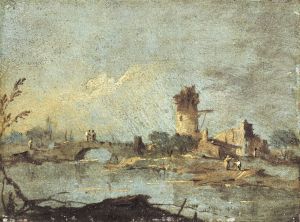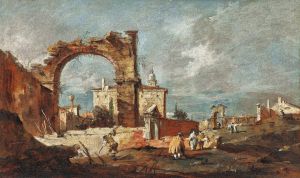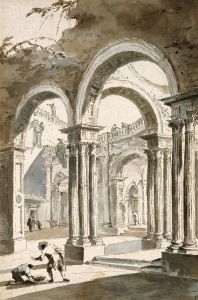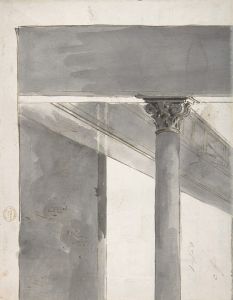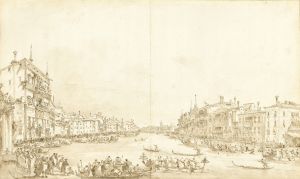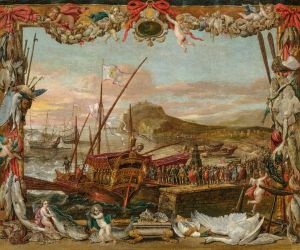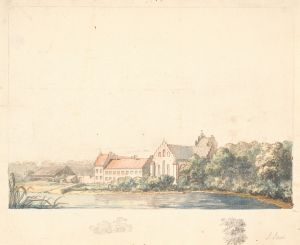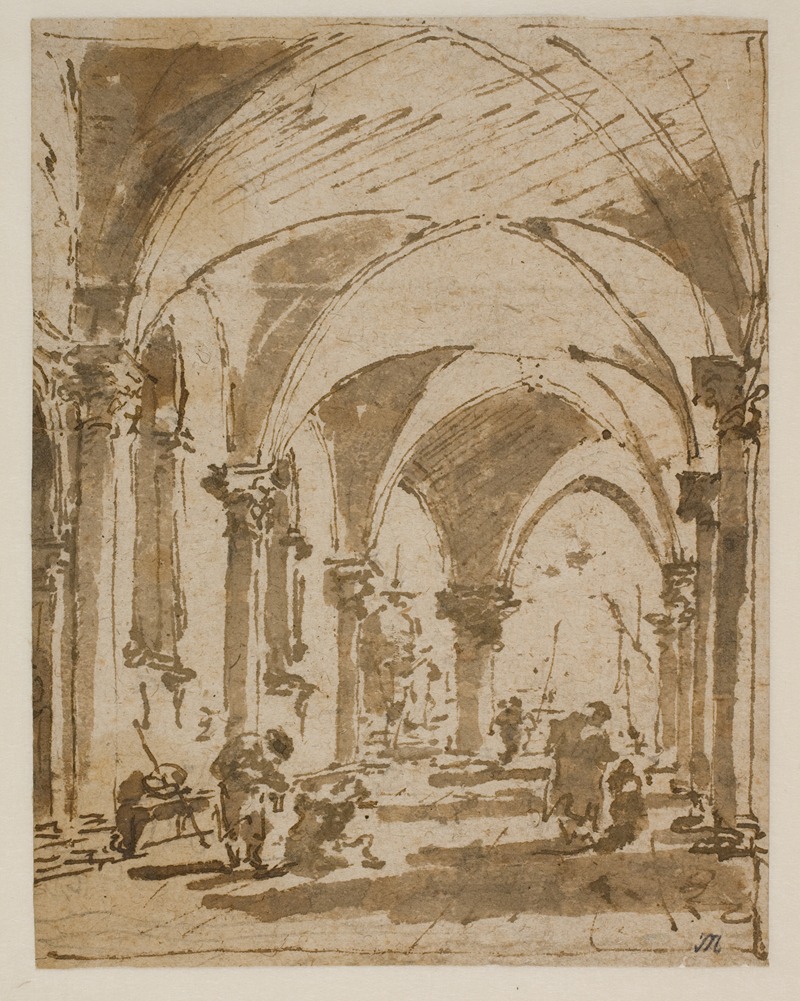
Dogepaladsets buegang mod Piazzettaen
A hand-painted replica of Francesco Guardi’s masterpiece Dogepaladsets buegang mod Piazzettaen, meticulously crafted by professional artists to capture the true essence of the original. Each piece is created with museum-quality canvas and rare mineral pigments, carefully painted by experienced artists with delicate brushstrokes and rich, layered colors to perfectly recreate the texture of the original artwork. Unlike machine-printed reproductions, this hand-painted version brings the painting to life, infused with the artist’s emotions and skill in every stroke. Whether for personal collection or home decoration, it instantly elevates the artistic atmosphere of any space.
Francesco Guardi (1712–1793) was a prominent Venetian painter of the 18th century, known for his vedute, or detailed cityscapes, which captured the essence of Venice during its final years as an independent republic. His works are often characterized by their atmospheric quality and loose, expressive brushwork, which distinguish them from the more precise and architectural style of his predecessor, Canaletto.
One of Guardi's notable works is Dogepaladsets buegang mod Piazzettaen (translated as The Arcade of the Doge's Palace Looking Towards the Piazzetta). This painting depicts a view from the arcade of the Doge's Palace, one of Venice's most iconic landmarks, looking out towards the Piazzetta, a small square that connects St. Mark's Square to the lagoon. The Piazzetta is flanked by the Biblioteca Marciana and the Doge's Palace, and it features two monumental columns, one topped with the winged lion of St. Mark, the symbol of Venice, and the other with a statue of St. Theodore, the city's earlier patron saint.
In this work, Guardi captures the interplay of light and shadow under the arcade, creating a sense of depth and movement. The painting also includes figures of Venetian citizens and visitors, adding a lively, human element to the architectural setting. Guardi's use of color and his distinctive, almost impressionistic brushstrokes convey the vibrancy and atmosphere of 18th-century Venice.
This painting is an example of Guardi's ability to blend realism with a poetic interpretation of his surroundings. While the architectural details are recognizable, Guardi's focus is less on precise accuracy and more on evoking the mood and spirit of the scene. His vedute often reflect the fading grandeur of Venice during this period, as the city faced political and economic decline.
Dogepaladsets buegang mod Piazzettaen is part of Guardi's larger body of work that celebrates Venice's unique beauty and cultural heritage. Today, his paintings are highly valued for their artistic merit and historical significance, offering a glimpse into the life and architecture of 18th-century Venice. The exact location of this specific painting may vary, as Guardi's works are held in collections around the world, including major museums and private collections.








